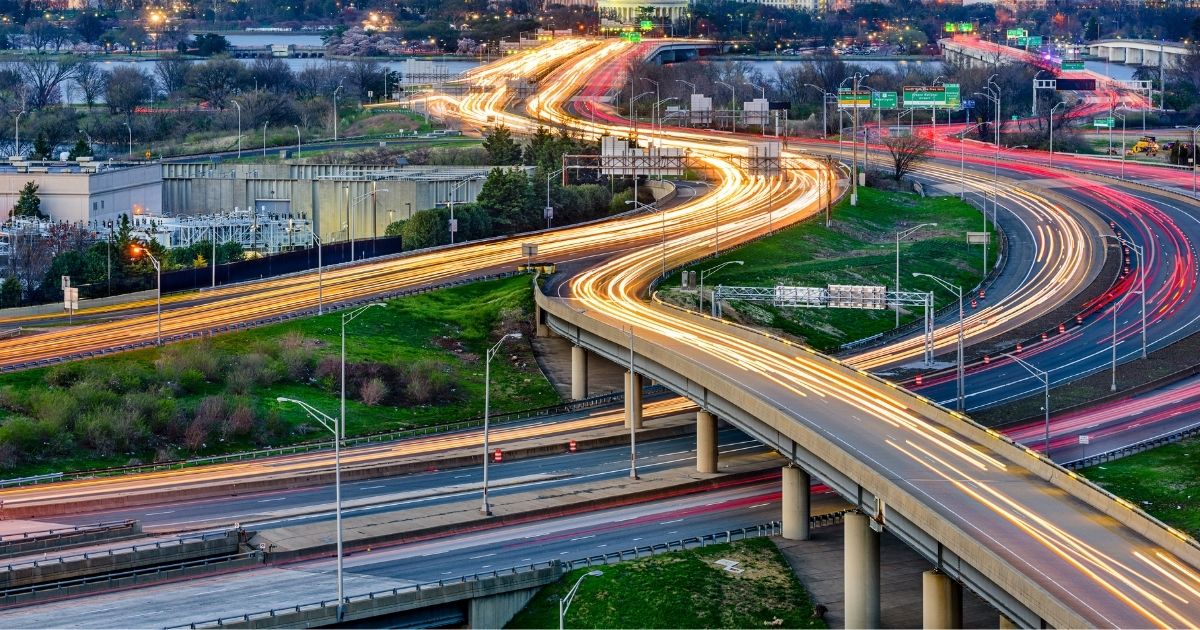September 20, 2021
How can I Stay Safe While Driving on the Highway?

Driving on a highway or freeway is significantly different than driving in town at speeds ranging from 25 to 45 miles per hour. Most highways have extended stretches with speed limits generally ranging from 55 to 65 miles per hour. Freeways with limited access let you drive even faster, with a lot of states posting maximum speeds of 75 miles per hour. Speed is a critical factor in car accidents and resulting injuries. The faster a vehicle is traveling when a wreck occurs, the greater potential for catastrophic injuries.
If you are a newer driver or otherwise have relatively little experience driving on highways, the following information could help make your travels safer. Listed below are essential highway driving safety tips.
Maintain a Safe Following Distance
A safe following distance is critically important to prevent accidents while traveling at freeway speeds. The faster vehicles move, the farther they travel per second. Instead of using distance as a guide to provide a safe buffer between vehicles, timing is a more effective way to ensure a safe following distance. The National Highway Traffic Safety Administration (NHTSA) says you should maintain at least a two-second gap between your vehicle and the vehicle ahead of you while on the highway or freeway. If it is raining, snowing, or road conditions are otherwise less than ideal, you need to increase the distance between your vehicle and the ones that are ahead of you.
A simple and effective way to determine your safe traveling distance is to count the time it takes your vehicle to reach a road marker. A lane marking, road sign, or similar stationary object that is on or near the roadway works perfectly for judging the time interval between a vehicle that you are following and the front of your car. The two-second gap helps to spread out vehicles, makes it easier for others to merge and exit, and enables safer lane changes.
Use Passing and Travel Lanes as Intended
If you are on the freeway in the left lane and you are not overtaking any vehicles, you are preventing other vehicles from safely passing you. All freeways have exit and entrance lanes, travel lanes, and passing lanes. Traveling in a passing lane is illegal in most states, and it could be dangerous if you cause traffic to stack up behind you.
Forcing vehicles to pass on the right instead of using the passing lane also increases the risk of an accident. Most drivers are used to being passed on the left, especially on a freeway. When vehicles overtake them on the right, it is much easier to overlook a vehicle in a blind spot and cut it off by accident while changing lanes.
Watch Out for Merging Traffic
A big mistake that many drivers make is not moving over to enable merging traffic to enter the freeway safely. When an overtaking lane is open and a line of vehicles are stacked up in the travel lane, it becomes much more dangerous for a merging vehicle to safely enter the freeway. Instead of staying in the travel lane when vehicles are trying to merge, you should move over one lane or safely enable merging traffic to enter. When drivers ignore merging traffic, they create dangerous situations. You need to adjust your speed and enable other vehicles to safely enter the highway or freeway.
When you are trying to merge into traffic, you need to adjust your speed and look for safe openings. That is much easier to do when other motorists are maintaining at least a two-second gap between them and vehicles in front. It also is much easier when other motorists are paying attention to the merging traffic and lanes.
Do Not Travel in Blind Spots
A major error many drivers make is traveling in the blind spots of other vehicles. When you are driving and look in the rearview mirror, you only get a partial view of the road. While you can see directly behind you, there is a blind spot to the right and left of your vehicle where a motorcycle, car, or other vehicle might be located. Looking over your shoulder and checking the side mirrors are necessary steps to ensure your blind spot is clear.
If you are driving and there is a commercial truck next to you, that vehicle has a very large blind spot. That blind spot could hide your entire vehicle and make you vulnerable to being cut off or forced off of the road. Whenever you are driving and you are passing a large truck, it always is best to pass it as quickly as possible. That limits the amount of time you spend in a very large blind spot and greatly reduces the potential for an accident.
Norristown Car Accident Lawyers at Anthony C. Gagliano III, P.C. Help Clients Injured in High-Speed Collisions
No matter how well you drive on a highway, someone could make a mistake and cause an accident. If you were injured in a high-speed accident, contact our experienced Norristown car accident lawyers at Anthony C. Gagliano III, P.C. today. We will help you build a strong case against the negligent driver. For more information and to schedule a free consultation, call us at 267-861-7100 or contact us online. We are located in Philadelphia, and we serve clients throughout Montgomery County, Delaware County, and Norristown, Pennsylvania.